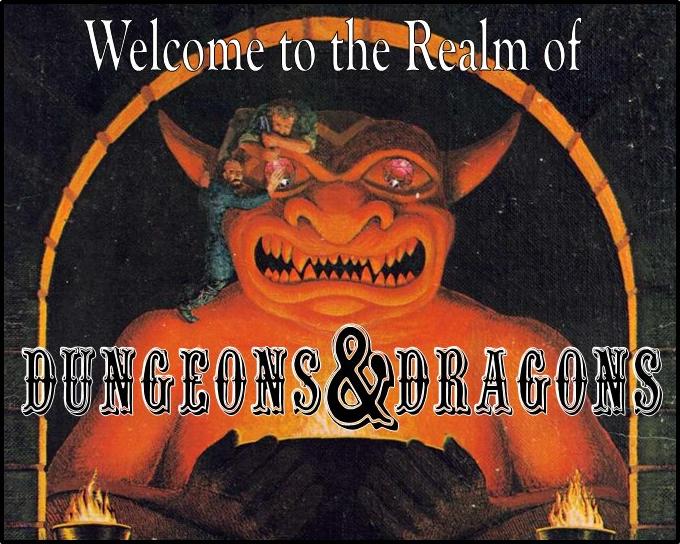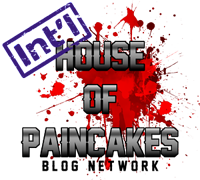We all know about Hit Points in RPG’s, and in Star Trek there is little difference – they represent the characters durability and resiliance.
Reduction to your hit points can take many forms - Fatigue, Malnutrition, Grazing hits in Combat, or even some gribbly Alien Disease (Andorian Shingles for example).
In this set of rules we also have "Life Points" - they are important in this Star Trek RPG as they help draw the line between "Grazes" and "Hits".
Life Points are exactly that, the “Life” of the Character. Your Life Points are equal to your Characters Str+Con+Dex divided by three – plus your Level.
Example – Captain Kurt is 6th Level, and has 52 Hit Points. His Str is 14, his Con is 16, and his Dex is 18. 14+16+18 = 48, 48/3 = 16. 16+6 (for Kurts Level) = 22. Captain Kurt has 22 Life Points. When he advances to Level 7 he will have 23 Life Points.
Combat & DamageBoth Close Combat and Ranged Combat are worked out slightly differently in these Star Trek Roleplaying Notes, mainly because of the lethality of 24th Century Weapons – but partly due the the lack of Armour and therefore an Armour Class.
If the intended Target of the attack is aware that the attack is coming, you roll to hit as usual (applying all the usual modifiers for range, level, skill etc – you roll to hit, and the intended victim then rolls a standard Combat Based Reflex Test (Reflexes Score + 1D20).
If the Attacker rolls a “1” to hit, the Attack automatically misses.
If the Target rolls equal to the Attackers roll, they take a “graze” and the Attacker rolls the Damage rating of the Weapon – the Victim of the attack takes that many Hit Points of Damage to their Hit Points.
If the Target rolls higher than the Attackers roll, they successfully avoid the attack – and take no Damage.
If they fail the Roll, they take “Hit” Damage and the Attacker rolls the Damage rating of the Weapon and the Damage is applied directly to your Characters Life Points (see -10 HP and Death).
If a natural “20” is rolled, not only does the Victim take Life Point Damage – but he is also “stunned” for a number of Rounds equal to half the Damage taken. Medical Aid can reduce this.
If the intended Target is unaware of the Attack, the Attacker instead rolls against the targets Reflexes.
If the Attacker rolls a “1” to hit, the Shot automatically misses.
If the Attacker rolls equal or lower than the Targets reflexes score - the victim of the Attack takes a “graze” and the Attacker rolls the Damage rating of the Weapon and the Victim takes that many Hit Points of Damage to his Hit Points.
If you roll more than the Targets Reflexes, the Victim takes “Hit” Damage - the Attacker rolls the Damage rating of the Weapon and the Damage is applied directly to the Characters Life Points (see -10 HP and Death).
If a natural “20” is rolled, not only does the Victim take Life Point Damage – but he is also “stunned” for a number of Rounds equal to half the Damage taken. Medical Aid can reduce this.
The above rules also apply to attacks/effects that target an Individuals Toughness (in the case of Radiation, Explosions, and Diseases) and Willpower (in the case of Psychic, Illusionary, and Fear based attacks) as well.
Stun AttacksWeapons which stun ALWAYS affect the targets Life Points, this is only temporary damage and should be noted on the sheet as such. Stun Damage is recovered at a rate equal to the characters Con Bonus +1 each round (with a minimum of 1 point recovered each round), when this temporary damage is reduced to Zero the character recovers conciousness. Medical Aid can speed this recovery.
If the intended Target of the attack is aware that the attack is coming, you roll to hit as usual (applying all the usual modifiers for range, level, skill etc – you roll to hit, and the intended victim then rolls a standard Combat Based Reflex Test (your Reflexes Score + 1D20).
If you roll a “1” to hit, the Attack automatically misses.
If you roll equal or lower than the intended victims roll, the Stun "grazes" the target and the Attacker rolls the Damage rating of the Weapon – the victim makes a Toughness Save with a Challenge Modifier equal to the amount of Stun Damage Rolled. If passed the target is not stunned and takes no effect from the shot, if failed the victim takes that many Points of temporary Stun Damage to his Life Points.
If the intended Target rolls higher than the Attackers roll, they have successfully avoid the attack – and take no effect from the Shot.
If the Victim fails the Roll, they take Stun Damage with no way of avoiding it - and the Attacker rolls the Damage rating of the Weapon and the temporary Damage is applied directly to the Characters Life Points.
If a natural “20” is rolled, the Stun Damage is doubled.
If the intended Target is unaware of the Attack, the Attacker instead rolls against the targets Reflexes.
If you roll a “1” to hit, the Attack automatically misses.
If the Attacker rolls equal or lower than the Targets reflexes score, the Stun "grazes" the target and the Attacker rolls the Damage rating of the Weapon – the victim makes a Toughness Save with a Challenge Modifier equal to the amount of Stun Damage Rolled. If passed the target is not stunned and takes no effect from the shot, if failed the victim takes that many Points of temporary Stun Damage to his Life Points.
If attacker rolls more than the Targets Reflexes Score, the Victim take Stun Damage with no way of avoiding it - and the Attacker rolls the Damage rating of the Weapon and the temporary Damage is applied directly to the Characters Life Points.
If a natural “20” is rolled,
If attacker rolls more than the Targets Reflexes Score, the Victim take Stun Damage with no way of avoiding it - and the Attacker rolls the Damage rating of the Weapon and the temporary Damage is applied directly to the Characters Life Points - and the Stun Damage is doubled.
-10 HP & DeathIn a lot of D20 based RPG’s, normally when a Character reaches -10 Hit points he dies almost immediately. In these Star Trek notes its somewhat different . . . .
When a Character reaches Zero HP he is battered and exhausted, after that point – all Damage is applied directly to the characters Life Points rather than applying “graze” Damage to his Hit Points.
Losing Life PointsWhen a character takes Damage to his Life Points there are consequences, these are listed below.
If a Character is reduced to half his Life Points (or less) he must IMMEDIATELY make a Constitution Saving Throw – the difficulty is ALWAYS 18 regardless whether the Characters Constitution Score is Primary or Secondary. If it is failed, the Character passes out. If it is passed, the Character stays Conscious – and must continue making Constitution Saves every Round until his Life Points are healed and passes the Consciousness barrier (more on healing later).
If the Character continues taking Damage, and reaches Zero Life Points he must make another immediate Constitution Save (again Difficulty 18 regardless) and if failed the Character expires and must be resuscitated within minutes or the Character Dies permanently. If passed he must continue making Con Saves each round. However, the difficulty of the Save increases by 2 each time he passes (the poor fellow is dying after all) until the he receives medical aid or finally expires.
Death Saves TableInitial Save vs. Death – 18+
After1 additional Round – 20+
After 2 additional Rounds – 22+
After 3 additional Rounds – 24+
After 4 additional Rounds – 26+, and so on . . . . .
Next - Medical Aid in the 24th Century




